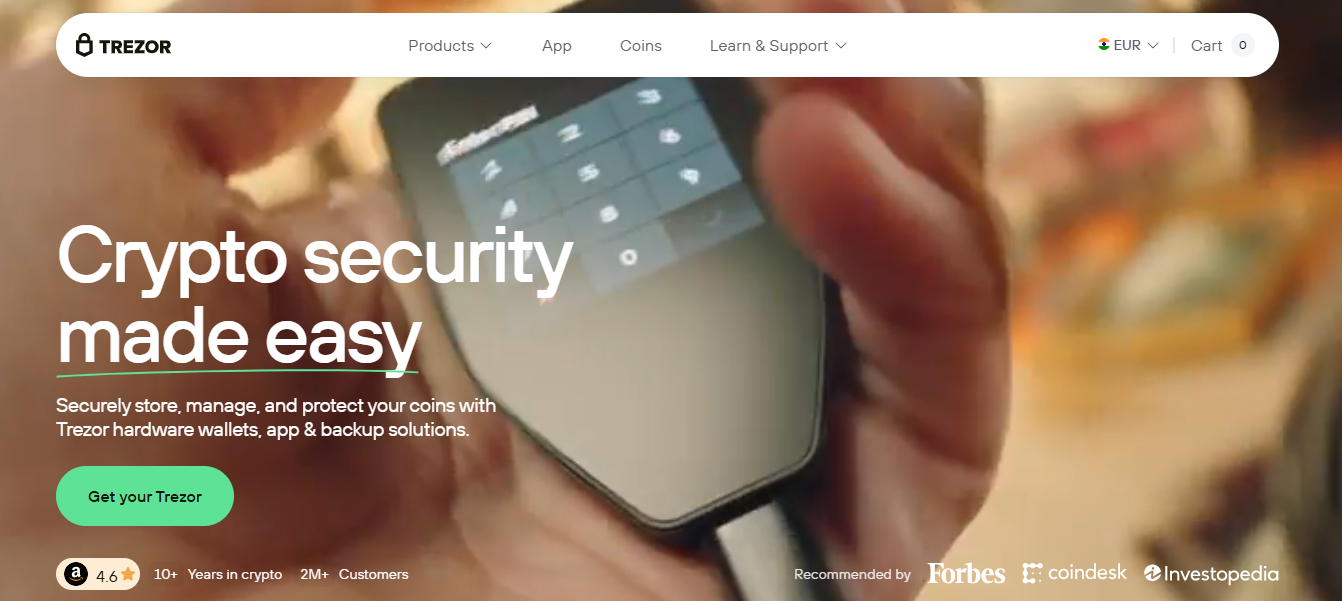Understanding Trezor.io Login: A Guide to Accessing Your Crypto Securely
When people first explore hardware wallets, especially Trezor, one of the most common questions is: “How do I log in to my wallet at Trezor.io?” It’s a natural question, especially for those familiar with online banking or cryptocurrency exchanges where you use a username and password to access your account.
However, the Trezor hardware wallet operates differently. It doesn’t use traditional login systems at all. Instead of storing your funds or credentials online, Trezor gives you full control of your private keys, ensuring your crypto remains secure and offline.
This guide will explain what “Trezor.io login” really means, how you access your wallet, and how to stay safe while using your Trezor device.
No Traditional Login on Trezor.io
Unlike centralized platforms (like Binance or Coinbase), Trezor is a self-custody solution. That means:
- You don’t create an account on Trezor.io
- There’s no username, email, or password required
- Trezor doesn’t store any of your information or assets online
Instead, your private keys are stored only inside your Trezor hardware wallet, which must be physically connected to your computer or mobile device to approve any action. Your “login” is essentially just plugging in your device and verifying your identity locally through a PIN or optional passphrase.
In short, Trezor.io login doesn't exist in the traditional sense, and that's by design — to keep your assets in your hands only.
How You Actually Access Your Trezor Wallet
While there’s no web login page, here’s how to securely access your wallet and manage your cryptocurrencies:
Step 1: Download Trezor Suite
To access your Trezor wallet, you’ll need to use the official Trezor Suite app. You can download it from: 👉 https://trezor.io/start
Trezor Suite is available for Windows, macOS, and Linux. It is also accessible via a web app for those who prefer not to install software, though the desktop version is considered more secure.
Step 2: Connect Your Trezor Device
Once Trezor Suite is installed, open the app and connect your Trezor hardware wallet via USB. The Suite will automatically detect your device and prompt you to enter your PIN code — a numeric code that you create during the wallet setup.
If you’ve enabled a passphrase, you’ll also be asked to enter that. This adds an extra layer of security, creating a hidden wallet on top of your regular one.
Step 3: Access Your Wallet Dashboard
After entering your PIN and optional passphrase, you’ll be taken to the Trezor Suite dashboard, where you can:
- View your portfolio
- Send and receive crypto
- Add or manage accounts
- Buy, sell, or exchange cryptocurrencies
- Track transaction history
Every sensitive operation must be manually confirmed on your Trezor device, so no transactions can occur unless you physically approve them.
Why Trezor Avoids Traditional Login Systems
Trezor’s security model is built around the idea of "trustless self-custody." Instead of trusting a company to secure your assets and credentials, you are in complete control.
Here’s why there is no login at Trezor.io:
- No online data storage: Your private keys are never stored online or in the cloud.
- No risk of server hacks: Since there are no centralized accounts, there's nothing for hackers to breach.
- No need for passwords: Your wallet is protected by your device and recovery seed — not a server-side login system.
This approach minimizes attack vectors and makes it nearly impossible for your crypto to be stolen unless someone gains access to both your Trezor device and your recovery phrase.
What If You Lose Access?
Even though there’s no login system, you can still recover your wallet if your device is lost or damaged — as long as you have your recovery seed phrase.
When you first set up your Trezor, it generates a 12-, 18-, or 24-word recovery phrase. This phrase is the only way to recover your wallet if your Trezor is ever lost or stolen.
To recover:
- Purchase a new Trezor device.
- Open Trezor Suite and choose “Recover Wallet.”
- Enter your recovery phrase directly on the device.
- Your wallet, including all crypto accounts and balances, will be restored.
Never share your recovery phrase and never type it into a computer or website. Always keep it written down and stored in a safe, offline place.
Common Misconceptions About Trezor.io Login
“Can I reset my password at Trezor.io?”
There is no password or login, so there is nothing to reset. If you lose your device and your recovery phrase, your wallet cannot be recovered.
“Is there a login for Trezor Suite?”
Trezor Suite does not require a traditional login either. Access is granted through your physical device + PIN + optional passphrase.
“What if someone finds my device?”
Without your PIN and recovery phrase, they cannot access your funds. Trezor automatically wipes itself after multiple failed PIN attempts.
Conclusion
While the phrase "Trezor.io login" might sound like you should be able to log in to a website, Trezor works completely differently — and far more securely. By avoiding traditional web-based login systems, Trezor keeps your assets safe from online threats and puts full control in your hands.
To access your wallet, all you need is your Trezor device, your PIN, and (optionally) your passphrase. You won’t find a login form at Trezor.io because your crypto wallet isn’t online — and that’s what makes it so secure.
Made in Typedream